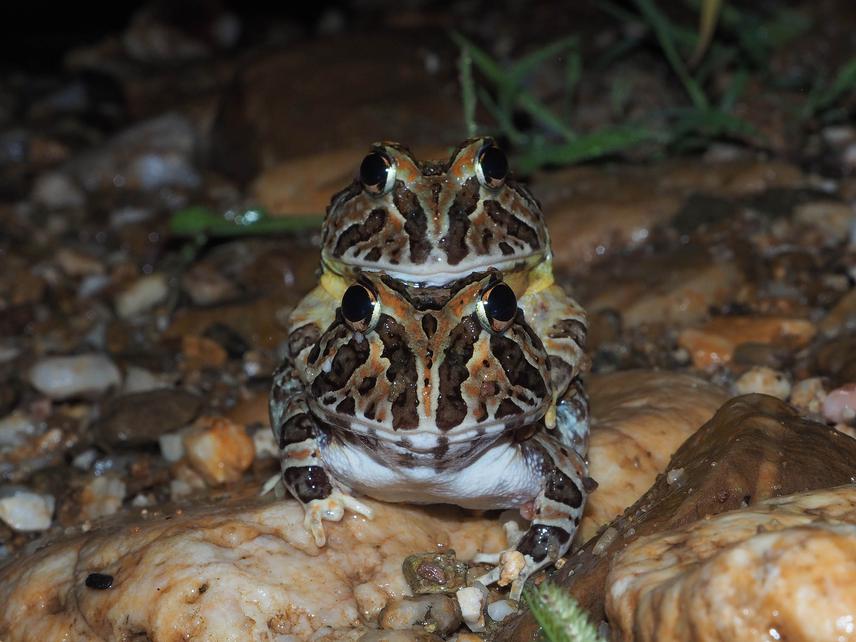Diego Armijos Ojeda
The present work aims to understand the mechanisms that determine of the way that amphibian species assemble in communities in the Pacific Seasonally Dry Forests. The study will take place across the Ecuadorian Tumbesian region. I will evaluate the spatial and environmental variables which affect species presence, along with their phylogenetic and functional traits and determine the most important locations for conservation, based both on amphibian community diversity/ endemism, the location’s potential as a corridor between protected areas or source for repopulating in the case of extinction events and the vulnerability to the expected global changes. Additionally, we will be able to predict if the climate change might drive species out of protected areas.

Pair of Pacific Horned Frogs, one of the emblematic amphibians of the Pacific Seasonally Dry Forests. ©D. Szekely
The project studies the factors that influence the amphibian community composition in the Pacific Seasonally Dry Forests from Ecuador. This type of habitat is currently one of the most endangered worldwide, and a particularly challenging environment for amphibians living here. By monitoring several locations throughout the Tumbesian region, I aim to understand the way habitat characteristics, along with phylogeny and functional traits of the species, determine the composition of amphibian assemblages. This would allow to determine the priority locations for amphibian conservation in this ecosystem.
Planned Activities:
Activity 1. Identification of sites of interest
Activity 2. Fieldwork
Activity 3. Data processing and manuscript writing
Activity 4. Design of a proposal to include the priority amphibian habitats in the national network of protected areas and submission to the Ecuadorian Ministry of Environment